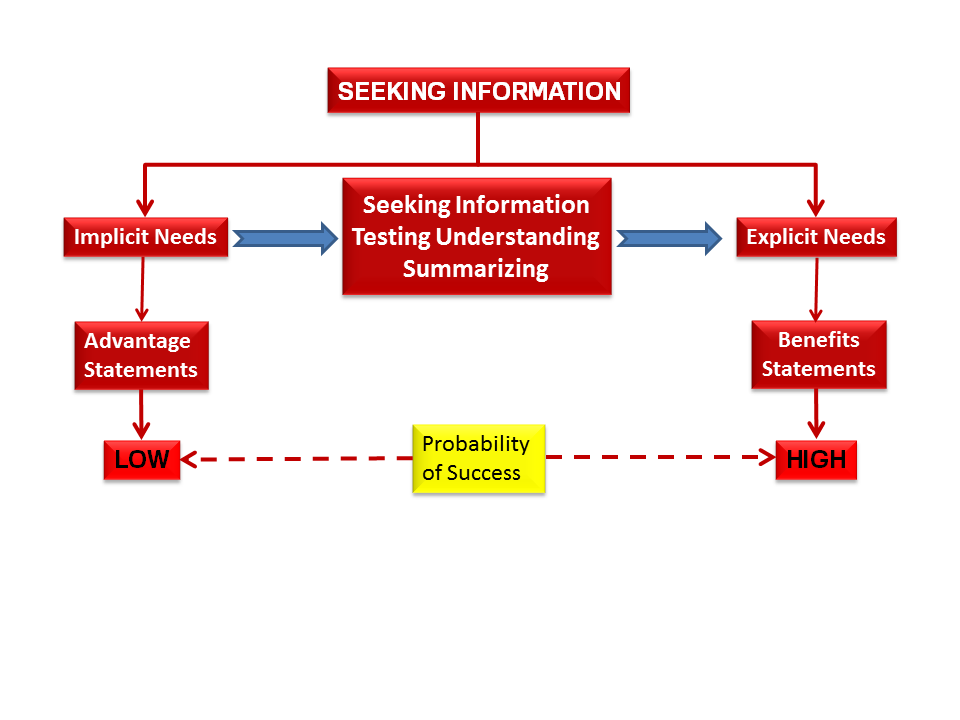INTRODUCTION
A frequent and often crucial situation in management today is one in which one person is seeking to persuade another to accept proposals for change. This situation commonly occurs when a subordinate presents a case to his or her boss.
Unfortunately, people usually spend a great deal more time and effort in collecting supporting facts and figures than in planning for the face-to-face interaction on which the success of the whole exercise usually depends. Careful consideration of interactive strategy at the planning stage can both assist in the selection of effective arguments and result in more persuasive interactions.
This discussion of the issues involved concentrates on persuasion in the boss-subordinate context; but the principles considered apply equally well to any situation in which one person is seeking to gain the co-operation or the consent of another.
THE PARALLEL WITH SELLING
There is a direct parallel with the selling situation, in which the salesperson is presenting a case to a potential buyer. The parallel is worth exploring because, in a selling situation, the result of an effective presentation is concrete and visible: a sale occurs. Much can be learned about effective persuasion strategy from examining the basic concepts of selling.
The Selling Strategy
Central to an effective selling strategy is the idea that people buy because they have needs. An effective salesman identifies needs in a potential buyer, and then demonstrates how the product or service he wishes to sell will satisfy them.
Identifying Needs
To a potential buyer, the most convincing statements of his needs will be those he makes himself. For the salesman, therefore, an essential first step in the selling process is to obtain need statements from the potential buyer. (in the case of a buyer with whom the salesman has dealt before, the first step would be to check that previous need statements are still relevant, and to elicit statements which indicate more recent needs.)
Identifying needs is an often underestimated and underused skill in selling situations. The prime objective is to discover clear statements of buyers’ needs and intentions: i.e. to establish explicit needs.
e.g. “I want to sync my desktop with my mobile devices.”
Frequently, buyers will at first give vague, “undeveloped” statements, such as “I don’t really like……” or “I’d like some changes…….” Such statements may indicate problems or convey half-formulated desires; they do not expose the real needs that underlie them. Instead they merely hint at implicit needs which are present but remain hidden from the conscious awareness of the buyer and the salesman – like a fuzzy image.
The task of the salesman is to involve the potential buyer in the process of “developing” these implicit needs into explicit needs, to help him express the needs underlying his initial vague statements in terms which are clear and specific. The key behaviors which will help the salesman achieve this are SEEKING INFORMATION, TESTING UNDERSTANDING and SUMMARIZING.
The explicit need statements obtained will provide the essential basis on which the sales conversation proceeds further; they are statements which the potential buyer will acknowledge as being his own rather than the salesman’s. The effective salesman will seek to ensure that the potential buyer sees the sales process not as something to which he is being subjected as a passive victim, but as an interaction in which he is an active and interested participant.
Responding to Needs
However skillfully the salesman has achieved the development of explicit need statements, the potential buyer is unlikely to buy unless he receives adequate information about the product or service in question and is able to relate this positively to the needs he has acknowledged.
The next stage of the sales interaction, therefore, is a demonstration of how the product or service can SATISFY the potential buyer’s explicit needs.
The salesman must now describe the product or service in the most persuasive way to increase the probability of a sale.
Observation of the ways in which salesmen describe their wares indicates three main types of statements:
The FEATURE statement – describing what the product or service is, in terms of its various characteristics.
The ADVANTAGE statement – describing in general terms, what a product or its features will do, how it can be used.
The BENEFIT statement – describing how a product feature or advantage meets an explicit need stated by the potential buyer.
The first two types of statement have been seen to be less persuasive, offering a low probability of achieving a sale.
The third kind of statement – the BENEFIT STATEMENT – is much more persuasive and achieves a high sales probability. This is because it is directly linked to the explicit needs stated by the buyer.
The ability to describe products in terms of benefit statements to the buyer is the second key skill in selling. It is clearly linked to the ability to develop implicit needs into explicit needs, as this model of the selling process shows:
A Benefit statement has the effect of BUILDING on the buyer’s statement of explicit needs.
APPLYING SELLING SKILLS IN CASE PRESENTATION
The two key skills identified in the effective salesman’s strategy are:
- The ability to develop explicit need statements, and
- The ability to express sales proposals in terms of benefits to the potential buyer.
To return to the problem of presenting a case to one’s boss: this strategy can be a powerful help both in the preparation (the planning stage) and in the presentation of the case.
Planning
Salesmen spend considerable time familiarizing themselves both with their product and with the characteristics of their potential buyers. The case presenter must do likewise.
Firstly, he should examine and list the features and possible advantages of his proposals. These should be expressed in terms of the actions required to implement the proposals (especially any costs involved) and of the consequences of implementation. This affords an opportunity to identify possible weaknesses in the case and to improve the proposals accordingly. A checklist of questions to be dealt with at this stage should include the following:
- How can difficulties in implementation be overcome or eliminated?
- How will the possible advantages outweigh the possible costs?
- What is the probable balance of advantage?
Secondly, he should list all the things he knows (or thinks he knows) about his boss’s needs. Explicit needs (know to have been stated by the boss) should be clearly identified, and should be carefully distinguished from implicit needs (inferred by the case presenter); so too should any areas of uncertainty – points on which it will be necessary to SEEK INFORMATION either from the boss – before or during the actual presentation of the case – or from some other person.
Thirdly, by placing the two lists “side by side”, the case presenter will be in a position to prepare the case he will present. A checklist of questions to be dealt with at this point should include the following: –
- What FEATURES or ADVANTAGES of the case can I state in BENEFIT terms – meeting my boss’s explicit needs?
- What implicit needs do I have to explore to see if they can be developed in terms of explicit needs?
- How, in terms of my boss’s needs, do the benefits outweigh the costs?
There is further opportunity for reviewing and perhaps modifying the proposals to be presented. Successfully presented proposals have been known to boomerang on their presenters, because of some related problem or disadvantage which the presenter either was unaware of or successfully covered up when presenting the case. Remember that the salesman is usually not the creator of what he sells and does not ultimately carry the can for it; but you are and, in your boss’s eyes, you will.
Presentation
The planning process described above should have pinpointed the questions that need to be asked and the benefit statements that can be made; those questions and statements in themselves form the essence of the presentation. Sound planning and preparation will take you most of the way to a successful presentation of your case, and you are not likely to get very far without it; but the remainder of the journey requires an at least equal degree of thought and care.
In your planning and preparation – essentially the non-interactive stage in the proceedings – you will have been developing a structure of thoughts and ideas in your own mind; the object of your presentation will be to transfer that structure from your mind to that of your boss. However confident you are that your case is a sound one and that it will meet your boss’s needs, you must not assume that it will “go across” automatically.
You may be tempted to tell your boss what his needs are as you see them; and you should resist the temptation firmly. Remember the strategy of the effective salesman in getting potential buyer to state his needs. Remember to check that previous need statements are still relevant (e.g. “What you said about Problem X got me thinking ….” – which can give you a lead-in to checking through with him the things he said). Remember above all the three behaviours which are vital in achieving a shared identification of your boss’s explicit needs: SEEKING INFORMATION, TESTING UNDERSTANDING and SUMMARIZING.
If the needs jointly identified with your boss form a good match with those you identified when preparing your case, you will be well placed to start using your BENEFIT STATEMENTS to good persuasive effect.
If not, then all is by no means lost. You have shown that you are actively interested in satisfying your boss’s needs; you have achieved a shared identification of what those needs are; your boss should be interested in and receptive to what you can do to help. You may need to “go back to the drawing board” and work afresh on your proposals with the benefit of the new information you have gained; but you should be more than half way to success next time.


